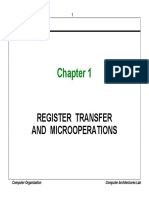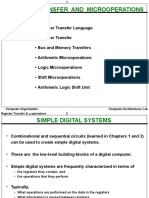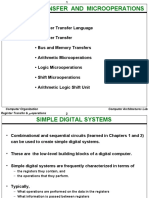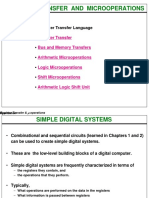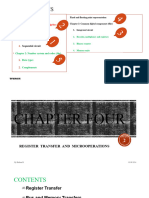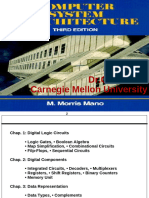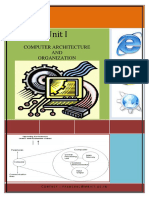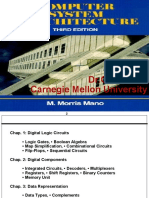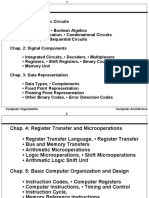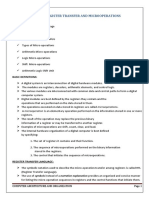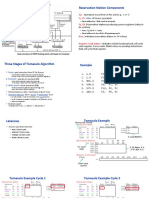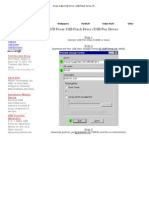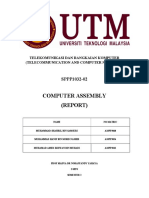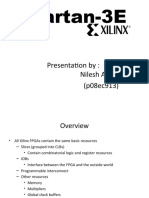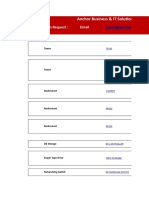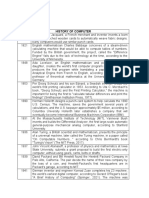0% found this document useful (0 votes)
10 views39 pagesModule 1 Part 2
The document presents an overview of computer architecture and organization, focusing on the Von Neumann model, registers, and register transfer language. It details the components of a digital computer, including the processing unit, memory, and various types of registers, along with their functions and operations. Additionally, it covers micro-operations and the basic structure of instructions in a computer system.
Uploaded by
Sagnik SahooCopyright
© © All Rights Reserved
We take content rights seriously. If you suspect this is your content, claim it here.
Available Formats
Download as PDF, TXT or read online on Scribd
0% found this document useful (0 votes)
10 views39 pagesModule 1 Part 2
The document presents an overview of computer architecture and organization, focusing on the Von Neumann model, registers, and register transfer language. It details the components of a digital computer, including the processing unit, memory, and various types of registers, along with their functions and operations. Additionally, it covers micro-operations and the basic structure of instructions in a computer system.
Uploaded by
Sagnik SahooCopyright
© © All Rights Reserved
We take content rights seriously. If you suspect this is your content, claim it here.
Available Formats
Download as PDF, TXT or read online on Scribd
/ 39










